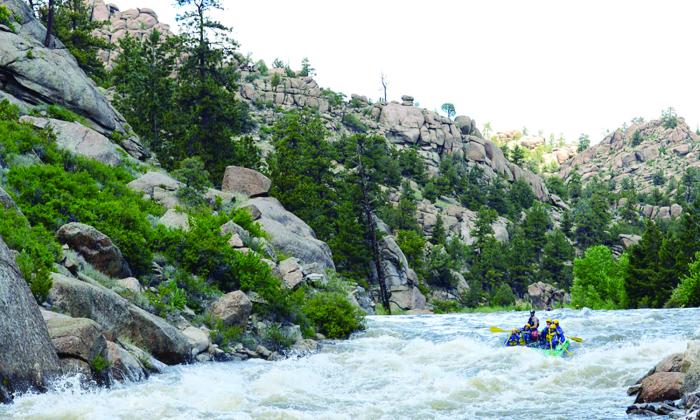The Arkansas River could have about 30 percent less water by the end of the century due to climate change, a new study out of Oklahoma State University predicts.
The study looks at the Arkansas River basin as a whole, which flows through Colorado, the southern half of Kansas and Oklahoma. The river itself cuts through the center of Wichita.
Drought has already taken a toll on much of western Kansas, where some cities experienced their driest years on record in 2022. Climate and energy advocates say that this shows it could get worse.
“Everyone should be worried about the quality and availability of their water supply,” said Jessica Travis, a program director with the Kansas Climate and Energy project. Travis worked for years to designate the Arkansas River as a National Water Trail and on academic research about fish in the river.
Jia Yang, the study’s primary author, is an ecosystem modeler at Oklahoma State. He said his team studied two different scenarios of climate change: a mediumcarbon emission scenario and a high-carbon emission scenario, which Yang says is more likely to happen.
When carbon dioxide is released in the atmosphere by burning fossil fuels, it warms the planet and causes climate change.
In both scenarios, the study predicts the Arkansas River will be drier by the end of the 21st century compared to the first twenty years of the century. The higher- carbon scenario predicts a drop in river flow by about 28%, while the lower-emission one predicts a drop of 12%.
Much of the Arkansas River basin is already prone to drought, Yang said.
“In the future climatechange scenarios, the drier place is going to get drier and wetter place is going to get wetter,” Yang said.
Wichita gets about 60% of its drinking water from Cheney Reservoir, which is fed by Ninnescah River. That’s a tributary of the Arkansas River.
“We know that our rivers are connected,” Travis said. “Even if our water's not coming directly out of the (Arkansas) river, it's connected to our drinking water supply.”
Travis said the river is also used as irrigation for crops, for recreation and as habitat for fish and other wildlife.
“The other thing we could expect is the actual extinction of species,” Travis said. “When you talk about any kind of drought, you're talking about eliminating an entire year class of fish, so no babies to replace the ones that are going to die.”
The Arkansas River shiner is one such fish that is currently listed as threatened by the U.S. Fish and Wildlife Service.
Yang said he pursued the research so cities ands towns in the Arkansas River basin could better prepare for the future.
“For the communities in this basin, we are going to have much less water for irrigation, for our daily use,” Yang said. “So we need to take some strategies to conserve the water.”

